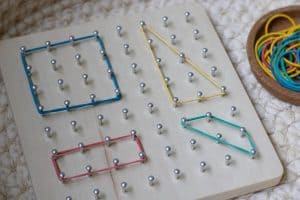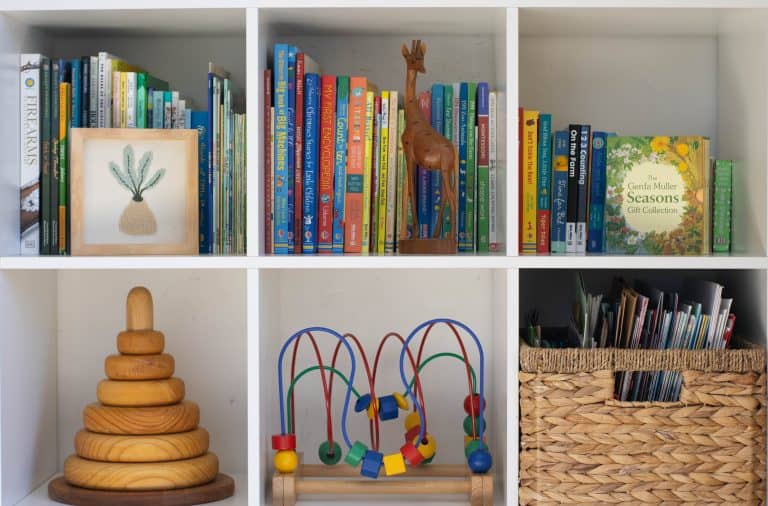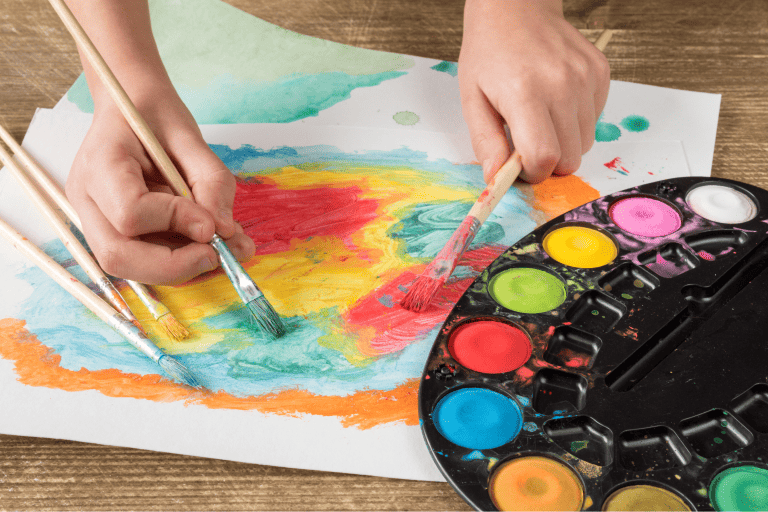Potty Training Essentials
There comes a time in the parenting journey where you will embark on helping your child learn where to put their poop and pee, commonly known as potty training, or potty learning, as some prefer to say. As a mom of twins, I found that there were some essential items to have with us at all times to make the transition from diapers to the toilet as smooth as possible.
Mental Preparation
You can’t buy mental preparation and patience on Amazon. Arguably, it is the most important part of finding success with potty training your child. Your mental preparation will be key to the whole potty training process going more smoothly. In my own expereince, the first time we tried to potty train our twins, I felt a little bit of pressure to have them potty trained before their second birthdays. While at the time they were showing signs of potty training readiness, I was not ready myself. I started anyway and quickly realized that I, myself, was not quite ready to do this whole potty training thing.
Now, we will likely never be fully ready, and yet we will still need to choose a day to start this new skill at some point. However, the first thing I needed to do was set realistic expectations of what full days of potty training would look like and how being prepared physically and mentally would help my children to be more successful. In this post, I’ll share what I read to get my mind in the right place before starting.
Something To Read Before You Start
After talking to many mom friends over the months leading up to potty training, I realized there are many methods, approaches, and strategies when it comes to potty training. Some claim to have your child using the potty all the time in 3 days, and others focus on potty training charts and giving a small reward for going pee or poo on the potty. The approach we took was different.
I listened to the audiobook, Oh, Crap! Potty Training. Fair warning, the author has some colorful language throughout the book, so be careful when listening to around children. This is just one book of many out there. Her method doesn’t claim to be a three-day potty training method and doesn’t use sticker charts or rewards, not even a small reward. This is one reason why it appealed to me to use her method and strategies in our Montessori home.

Key Points I Liked from this book
- Potty Training Blocks: Jamie breaks down the potty training process into blocks. She shares what each block is and the different skills you’ll observe from your child, and what success at each block looks like. She recognizes that each child is moving at a different pace. She is encouraging to say that the amount of time spent on each block will be different for each child. Each child is going to learn this skill at their own pace, in their own way. This made it feel like we were on our own timeline, not a 3-day potty training approach! Especially with my different children, it helped me to follow each as an individual and their learning timetable.
- Helpful Language to Use: I liked all the practical tips and phrases she gave to help you in those moments when you’re dealing with pee and poop accidents. We want to say “It’s okay!” after our child has an accident. Jamie clarifies that we need to be honest, direct, and acknowledge that they are still learning. Saying something like “I know you are still learning and your pee goes in the potty.” Both are true, but not giving the child the idea that peeing in their pants is an okay thing to do. Filling my mind with these little phrases helped me avoid some of the power struggles that can come with toilet use.
- Poop: She has lots of practical tips for how to help your child with pooping on the potty. This wasn’t an obstacle for our boys, but I know it can be a real struggle for some children. She has a whole chapter about it!
- Prompting but not over-prompting: She gives suggestions on how to prompt your child at the right time to go to the potty. She also shows and models how our language and the way in which we prompt can either lead us in or out of power struggles.
- Easy Catches: Instead of a regular potty schedule, she encourages all of the easy catches throughout the day. When the child wakes, before leaving the house, upon arriving somewhere, before naps, and before bedtime.
- Learning Your Child’s Cues: In those first few days, we are getting a glimpse into our child’s bowel movements. We will be watching them so closely to help them find success on the potty and become aware of when they need to pee and poop. Observing for their cues and prompting them accordingly.
Emotionally Supporting This Major Change
In this book, Jamie talks about how potty training is one of the first glimpses into how our child learns something. What a privilege to guide and support this big step in their life! Be confident that your child will get the hang of potty training, although it may not be with a three-day method.
Potty training is a big deal and full of big changes. One day, they will wake up and need to shift what they have been doing privately in their diaper for their whole life to now using the potty. It is understandable that it may come with some big emotions, power struggles, and it will take time for them to adjust and learn this new skill. We and other family members can be there for emotional support as they navigate this big change in their lives.
Amazon Storefront Potty Training Essentials
I’ve made it really easy to shop all of my potty training essentials in one place, or to come back and look through them as the need arises. Check out my full list of what we have loved using in our home and when we are out and about, which has made the task of potty training that much easier!
Now, let me break down our favorite potty gear that has made potty training twins just that much easier. Potty training takes commitment and intentionality on the part of the parent to help our child find success at using the toilet. Being prepared in all situations has been key in our family for long-lasting success with toilet learning! Once you see developmental readiness, somewhere between 20 and 30 months of age, based on Jamie Glowacki’s Oh Crap! Potty Training method. You may see signs of readiness earlier as well.
Toileting In the Home

This post contains affiliate links, which means I make a small commission at no extra cost to you. See my full disclosure here.
Potty Seat
The most essential item is a child-size potty. There are hundreds of potty seats out there. I’m sure many of them are great, and once you buy one, odds are you will forget about the other ones on the market! I did not test them all out, but got the one that I think looked the nicest and seemed like the easiest to clean.
We went with the Baby Björn Potty Seat. In full transparency, I purchased two used ones on Facebook Marketplace, because I prefer not to pay full price for things that I can find used. As a bonus, I got 2 of the same color so the twins wouldn’t fight over which potty to go on.
Baby Bjorn Potty Seat
Rubber-gripped bottom to prevent sliding, and a removable pot for easy dumping and cleaning. With both a high back and no back option, this makes a great potty for at home or in the back of the car on the go.

Baby Bjorn Toilet Trainer
In addition to a child-size potty chair, we got a seat that goes onto the big toilet. While potty training twins, this was essential. However, I like how having 2 options for my children to choose from also helped avoid some of the power struggles during the learning process. It also eliminates extra cleanup of the little potty and helps your child feel even more independent and capable. This one comes with a nice hook to hang it up in your prepared environment.
Flushable Wipes
A friend of mine recommended getting flushable wipes before we started potty training, and what a great recommendation! We keep a pack in both bathrooms, in the diaper bag, and in the car. It makes wiping out the potty (and a child’s bottom) easy and convenient!

Mama Bear Flushable Wipes
Easy and convenient fragrance-free flushable wipes have made cleaning up those messes involved in potty learning a breeze!
Step Stool
Accessibility to the toilet and to the sink for washing hands is a big part of being independent with toileting. A step stool in our bathroom is an essential that we use all throughout the day.
We’ve liked this 2-step step stool, which gets our boys right up to sink height! If you want to explore more step stools, check out this blog post with a variety of Montessori-friendly step stools for your home.

Toileting Books
Reading books about the things children are doing in their lives (like potty training) can help them as they navigate new skills and experiences in their lives! We put together a small collection of books that talk about different aspects of toileting. Here is what we have in our potty book basket!

- Going to the Potty by Fred Rogers
- How Do You Poo? *(I think this one is funny- especially if your child is afraid of pooping!)
- Everyone Poops
- Potty!
UnderwEAR and Training Pants
We went the training pants route, but I think big-kid underwear is just as good, if not a better option. In reading, Oh Crap! Potty training, I realized that the more things (like underwear) that your child has on that feel like a diaper, the more challenging it may be for them to make that connection. We often did, and still do fairly often, just have our boys be naked with pants or shorts on.
Why no underwear? Well, imagine the different sensations of having pee make your pants a little bit wet, or it running down your leg and pooling at your foot? I think the latter will make a bit clearer connection of when you missed getting your pee into the potty. I found this to be true for our boys!
With that said, I had ordered training pants first and then realized this logic. If I could go back, I think I would order cotton underwear instead. However, because training pants are more absorbent, it did make accidents a little less messy becasue a lot of the liquid soaked into the training pants.
Elastic Pants
Having the proper clothing for potty training is important. Your child needs easy access to the potty and needs to be able to push down and pull up their pants quickly. Get shorts or pants with elastic waistbands.
Toileting On The Go
Potty training doesn’t stop at home. A huge part of your child’s potty learning journey is learning how to go to the potty throughout our whole day, even away from home.
When we started potty training, we took a few days to be home and limit going out and about, but then real life settled back in, and we had things we had to go do. The best way to find success in potty training on the go is being prepared with these things, which help make those outings easier and more successful.
Someone asked me once, “Well, what do you do when you go to the park or the grocery store? Put them back into a diaper?” Nope! We potty train all the time, everywhere. On long car rides, I sometimes will put on a pull-on diapers, but not always. Here’s how we bring the potty with us everywhere we go, but in an easy and convenient way.
Foldable Travel Potty
We love this foldable travel potty! It is very compact, discreet, and fits on every public toilet we have gone to. The foldable potty comes in a little drawstring bag. It also has suction cups to secure it to the toilet seat, so it doesn’t slip around while your child is going to the bathroom. I love that it fits into my purse if I don’t want to lug the large diaper bag around.

Travel Potty For the Diaper Bag
Before I found the foldable potty seat, we were using this travel potty seat. Sometimes I still bring this because you can use it without a toilet being present. A great option while at the park!
Potty For the Car
Keep a small potty with you at all times, especially during those first few weeks and months of potty training. There is somethign about sitting in a car seat that always makes my boys have to go. We got a simple potty from Target, but something small like this would be good, or a portable travel potty with liners. As your child progresses on their potty learning journey, they will develop greater bladder control and stay dry for longer periods of time.
Car Seat Liners
One obstacle for me was getting comfortable with the new reality that my children would have accidents. As a mom of twins, this scared me a little bit because I didn’t want to be washing car seat covers, stroller liners, and bedding every day. (Insert a wonderful invention) But I found these piddle pads, cute right?! They slip right into your car seat or stroller, making any outing just that much less stressful.
Think Good Tots Piddle Pad
Need a solution to accidents while in the car or stroller? These piddle pads are super absorbent and the best solution I’ve found to potty training on the go!
Wet Bags
From my cloth diapering days, I had a lot of these wet/dry bags. They are perfect for holding wet clothes or swimsuits without getting the rest of your things wet. I always have an extra one in the car and in the diaper bag, just in case we have an accident. Alternatively, using a plastic shopping bag works just as well!
Waterproof Wet/Dry Bags
We use these all the time, and not just for potty training! They are great to bring along when you go to the pool or the beach for wet swimsuits or cloth diapering!
Mason Jar
In a pinch, you can use a mason jar to have your child go potty in. Think of it as a very compact portable potty. In the book, Oh Crap! Potty Training, the author recommends keeping one in your car at all times.

Other Potty Training Items You May Find Helpful
There are many things you can bring into your home for every stage of development. However, many things we can do without. But some items offer greater convenience or solve problems we encounter during the process, so they are worthy investments. Here are some additional potty training items that I could see being very helpful in a potty training journey.
Flush Husher
A flush husher is a little sensor cover for public restrooms to prevent the toilet from flushing on you when your child isn’t ready. This could be helpful if there is fear around toileting, especially when out in public!
Mattress Pad
Having an absorbent pad to place on your child’s mattress can be helpful when night training. This will protect your mattress as well as create less laundry when your child is sleeping diaper-free at night! I just ordered these! We didn’t do night time training right away, so I’ll have them when we are ready to start that portion of potty training.
Disposable Potty Liners
While on the go, we’ve often had to pull over on the side of the road for our boys to go to the bathroom. Disposable potty liners like this would make clean-up much easier! These were the most cost-effective liners I found; others seemed a bit expensive, when you’ve just got out of buying diapers!
Other Potty Training Resources
As a Mom of twins, I am ready to ditch diapers and support and guide my children to learn how to use the toilet. Here is our journey of potty training, potty learning, or toilet learning. It is any and all of those things!
I’ll share our expereince of our first month of potty training, the method and approach we used to find success in the first few weeks, as well as some common phrases that have helped to greatly eliminate power struggles in this process! I hope that sharing my story with you will encourage you to know that it may take longer than 3 days, and that is totally okay! Your child is capable and can do this work!















